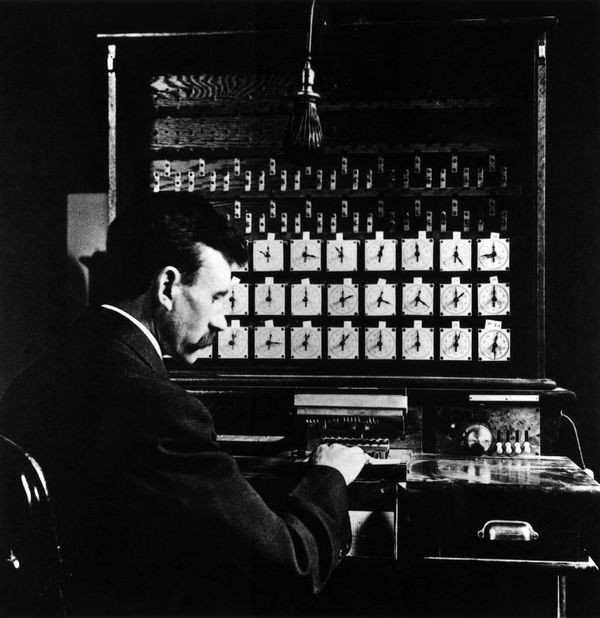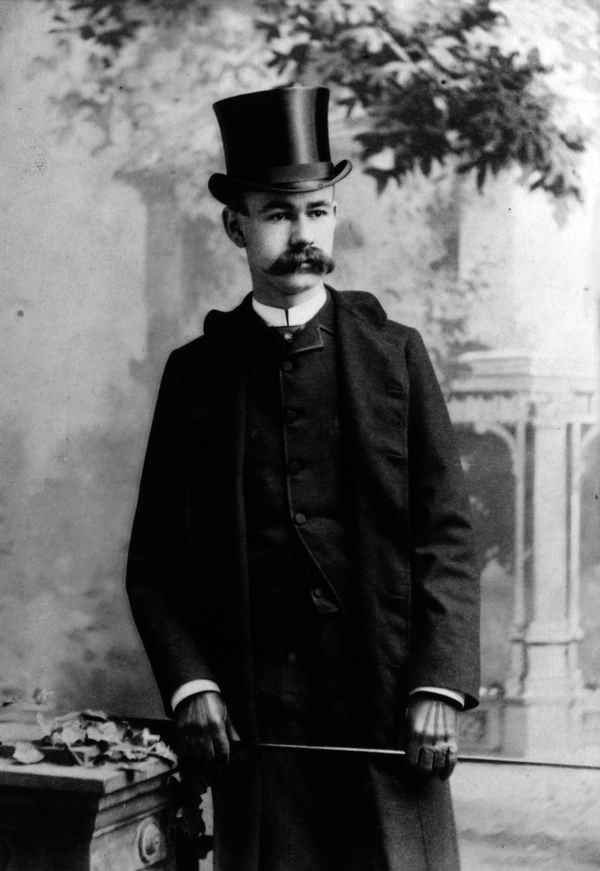Making Sense of the Census: Hollerith’s Punched Card Solution
Hollerith Electric Tabulating System (replica)
The 60 million cards punched in the 1890 United States census were fed manually into machines like this for processing. The dials counted the number of cards with holes in a particular position. The sorter on the right would be activated by certain hole combinations, allowing detailed statistics to be generated (for example, the number of married farmers over 40 years of age). An average operator could process about 7,000 cards a day, at least ten times faster than manual methods.
Making Sense of the Census: Hollerith's Punched Card Solution
Nothing stimulates creativity like a good crisis.
The U.S. Constitution requires a census every decade. That was manageable in 1790 with fewer than four million Americans to tally. Not so simple a century later, with 63 million. Estimates warned that the 1890 census wouldn’t be finished before the 1900 census began!
The government’s answer? A contest to devise a solution. Herman Hollerith won. He suggested recording data on punched cards, which would be read by a tabulating machine.
Hollerith system on cover of "Scientific American"
Hollerith’s innovative solution to the census data-processing crisis attracted the attention of the scientifically-minded.
View Artifact DetailHerman Hollerith with Tabulator
Hollerith founded the Tabulating Machine Company in 1895. The early TMC machines had 45 columns and used round holes.
View Artifact DetailPantograph Card Punch
Herman Hollerith’s tabulating system sped up the 1890 census, but there was still a lot of manual work involved. Most holes in each of the 60 million cards were individually punched, and the cards were moved and stacked by hand. A similar process was later used by the Department of Agriculture for farm censuses.
View Artifact Detail"Reading" The Holes
Following Hollerith’s proposal, in 1890 census takers went out and recorded information, most of which was later transcribed as patterns of holes in cards.
A tabulating machine processed these cards by pushing pins through the holes to enter cups of mercury beneath. This completed an electrical circuit, advancing a dial on the tabulator.
Punched Card illustration
The census cards were divided into sections to record the number of people in each household, how many were employed, their national origin, and other details.
View Artifact DetailCensus worker collects data
Seventy years after Hollerith first proposed using punched cards for census data, the Bureau still used the same basic system.
View Artifact DetailHerman Hollerith at age 24
When Hollerith's company merged with others to form CTR in 1911, he received $1.2M for his shares. Hollerith did not get along with Tom Watson, and he left the company soon after Watson arrived.
View Artifact DetailUnited States ten dollar note
Hollerith’s cards were roughly the size of the paper money in circulation in 1890. That let him use existing currency drawers, bins, and boxes to organize and process the 60 million census cards.
View Artifact DetailHollerith Pantograph in use
To record data using the pantograph punch, the operators had to carefully align a pin with a hole in a guide plate, and then push hard to create a corresponding round hole in the stiff paper card. It was a slow process compared to the later keyboard-driven punches.
View Artifact Detail













